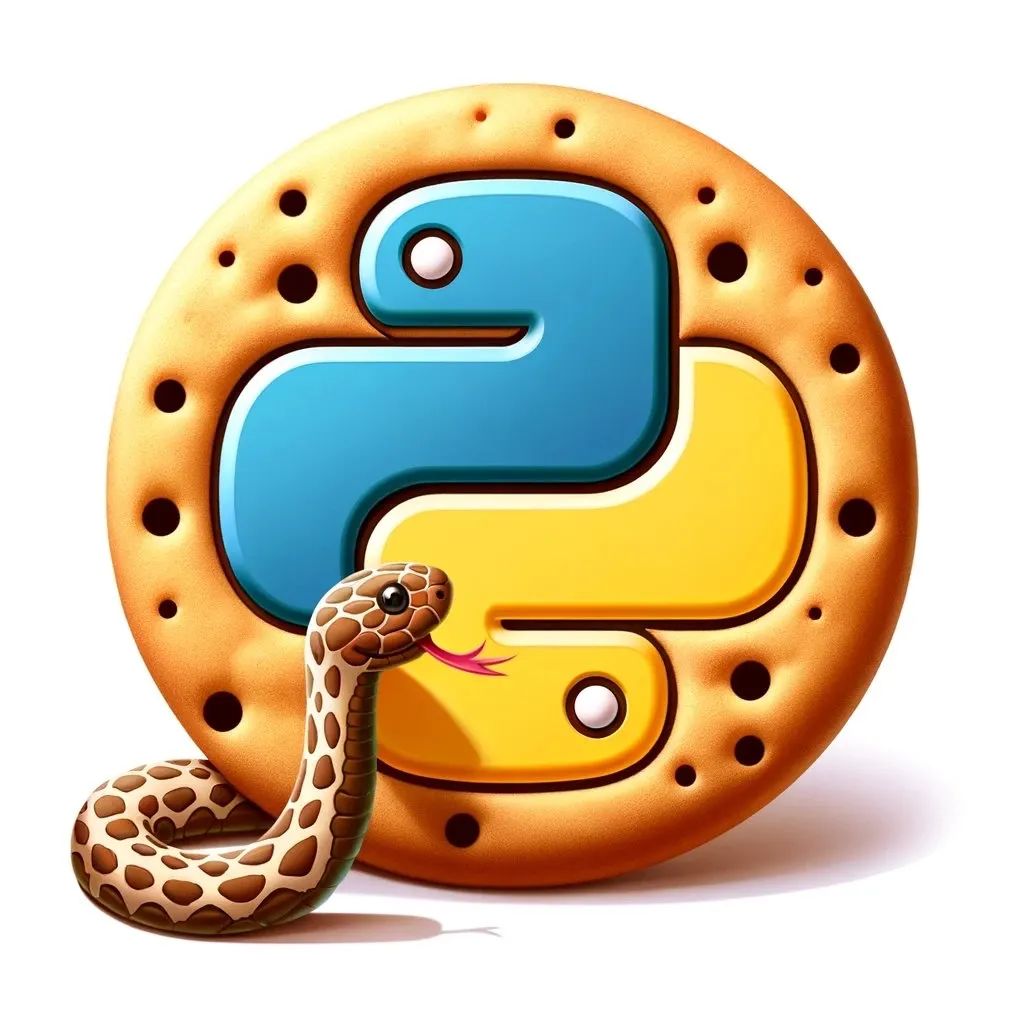今天和大家分享一個Python進階內容:面向對象編程(OOP)。如果你想成為Python高手,這是必須要掌握的內容。OOP特性使得代碼更加模塊化、易于理解和維護。

1. 面向對象編程基礎
1.1 什么是對象和類
在OOP中,類是一個藍圖,它定義了一組具有相同屬性和方法的對象的結構。而對象則是這個類的一個實例,擁有自己的狀態和行為。
1.2 類的創建和對象的實例化
在Python中,我們使用class關鍵字來定義一個類。下面是一個簡單的類定義示例:
class Dog:
def __init__(self, name):
self.name = name
# 實例化對象
my_dog = Dog("Buddy")
print(my_dog.name) # 輸出: Buddy
2. 屬性和方法
2.1 定義類屬性和實例屬性
類屬性是屬于類本身的,所有實例共享這個屬性。實例屬性則是每個對象獨有的。
class Dog:
species = "Canine" # 類屬性
def __init__(self, name, age):
self.name = name # 實例屬性
self.age = age
# 使用類屬性
print(Dog.species) # 輸出: Canine
# 使用實例屬性
my_dog = Dog("Buddy", 3)
print(my_dog.name) # 輸出: Buddy
print(my_dog.age) # 輸出: 3
2.2 實例方法、類方法和靜態方法
- 實例方法需要一個實例來調用,并且通常操作實例的數據。
- 靜態方法不需要類或實例來調用,它們通常用于工具函數。
class Dog:
species = "Canine"
def __init__(self, name, age):
self.name = name
self.age = age
def bark(self): # 實例方法
return "Woof!"
@classmethod
def get_species(cls): # 類方法
return cls.species
@staticmethod
def sleep(): # 靜態方法
return "Zzz..."
# 實例方法調用
my_dog = Dog("Buddy", 3)
print(my_dog.bark()) # 輸出: Woof!
# 類方法調用
print(Dog.get_species()) # 輸出: Canine
# 靜態方法調用
print(Dog.sleep()) # 輸出: Zzz...
3. 繼承
3.1 繼承的概念和作用
繼承允許我們創建一個新類(子類)來擴展或修改一個現有類(父類)的行為。這有助于代碼復用和組織。
3.2 如何實現類的繼承
在Python中,我們通過在類定義中列出父類來實現繼承。
class Animal:
def __init__(self, name):
self.name = name
def speak(self):
raise NotImplementedError("Subclasses must implement this method")
class Dog(Animal): # Dog繼承自Animal
def speak(self): # 重寫父類方法
return "Woof!"
my_dog = Dog("Buddy")
print(my_dog.speak()) # 輸出: Woof!
4. 封裝
4.1 封裝的概念和好處
封裝是將數據(屬性)和操作數據的代碼(方法)捆綁在一起的過程。它有助于隱藏內部實現的細節,只暴露必要的接口。
4.2 私有屬性和方法的使用
在Python中,我們使用單下劃線_前綴來表示私有屬性或方法,這表示它們不應該被類的外部直接訪問。
class Account:
def __init__(self, owner, balance=0):
self.owner = owner
self.__balance = balance # 私有屬性
def deposit(self, amount):
if amount > 0:
self.__balance += amount
def withdraw(self, amount):
if 0 < amount <= self.__balance:
self.__balance -= amount
return amount
else:
raise ValueError("Insufficient funds")
def get_balance(self): # 公開的接口來訪問私有屬性
return self.__balance
# 使用封裝
account = Account("Alice", 100)
account.deposit(50)
print(account.get_balance()) # 輸出: 150
5. 多態
5.1 多態的概念
多態允許我們使用統一的接口來處理不同類型的對象,而具體的行為則由對象的實際類決定。
5.2 通過繼承和方法重寫實現多態
在Python中,多態通常是通過繼承父類并重寫其方法來實現的。
class Animal:
def speak(self):
raise NotImplementedError("Subclasses must implement this method")
class Dog(Animal):
def speak(self): # 重寫父類方法
return "Woof!"
class Cat(Animal):
def speak(self): # 重寫父類方法
return "Meow!"
def animal_sound(animal):
print(animal.speak())
# 使用多態
dog = Dog()
cat = Cat()
animal_sound(dog) # 輸出: Woof!
animal_sound(cat) # 輸出: Meow!
6. 特殊方法
6.1 特殊方法的作用和使用場景
特殊方法允許Python類與內置操作和協議進行交互,例如比較、字符串表示等。
6.2 常見的特殊方法示例
class Person:
def __init__(self, name):
self.name = name
def __str__(self): # 特殊方法定義字符串表示
return f"Person(name={self.name})"
def __eq__(self, other): # 特殊方法定義等價性比較
if isinstance(other, Person):
return self.name == other.name
return False
# 使用特殊方法
p1 = Person("Alice")
p2 = Person("Alice")
print(str(p1)) # 輸出: Person(name=Alice)
print(p1 == p2) # 輸出: True
7. 類的高級特性
7.1 屬性裝飾器@property
屬性裝飾器@property允許我們把一個方法調用變成屬性訪問的形式。這通常用于當你需要在訪問屬性之前執行一些邏輯時。
class Circle:
def __init__(self, radius):
self._radius = radius
@property
def radius(self):
return self._radius
@radius.setter
def radius(self, value):
if value < 0:
raise ValueError("Radius cannot be negative")
self._radius = value
@property
def area(self):
return 3.14159 * self._radius ** 2
# 使用屬性裝飾器
circle = Circle(5)
print(circle.radius) # 輸出: 5
print(circle.area) # 輸出: 78.53975
circle.radius = 10
print(circle.area) # 輸出: 314.15925
7.2 類裝飾器的使用
類裝飾器可以修改類的行為。它們通常用于日志記錄、緩存、訪問控制等。
def logged(cls):
class Wrapper:
def __init__(self, *args, **kwargs):
print(f"Initializing {cls.__name__}")
super().__init__(*args, **kwargs)
def __str__(self):
original = super().__str__()
print(f"{cls.__name__} instance created")
return original
return Wrapper
@logged
class Rectangle:
def __init__(self, width, height):
self.width = width
self.height = height
def area(self):
return self.width * self.height
# 使用類裝飾器
rect = Rectangle(10, 20)
print(rect) # 同時打印初始化信息和對象的字符串表示
print(rect.area()) # 輸出: 200
8. 面向對象設計原則
8.1 SOLID原則簡介
SOLID是面向對象設計中的五個基本原則,它們分別是:
- 單一職責原則(Single Responsibility Principle)
- 開閉原則(Open/Closed Principle)
- 里氏替換原則(Liskov Substitution Principle)
- 接口隔離原則(Interface Segregation Principle)
- 依賴倒置原則(Dependency Inversion Principle)
8.2 原則在Python OOP中的應用
- 單一職責原則:每個類應該只有一個引起它變化的原因。
- 里氏替換原則:子類對象應該能夠替換其父類對象被使用。
- 接口隔離原則:不應該強迫客戶依賴于它們不使用的方法。
- 依賴倒置原則:高層模塊不應依賴于低層模塊,兩者都應該依賴于抽象。
# 單一職責原則示例
class EmailSender:
def send_email(self, message):
pass # 實現發送郵件的邏輯
class User:
def __init__(self, email_sender):
self._email_sender = email_sender
def notify(self, message):
self._email_sender.send_email(message)
# 依賴倒置原則示例
from abc import ABC, abstractmethod
class PaymentProcessor(ABC):
@abstractmethod
def process_payment(self, amount):
pass
class PayPalProcessor(PaymentProcessor):
def process_payment(self, amount):
print(f"Processing PayPal payment of {amount}")
class ShoppingCart:
def __init__(self, payment_processor):
self._payment_processor = payment_processor
def checkout(self, amount):
self._payment_processor.process_payment(amount)
# 使用SOLID原則
paypal = PayPalProcessor()
cart = ShoppingCart(paypal)
cart.checkout(100)
9. 綜合案例
9.1 將OOP概念應用于一個實際案例
假設我們正在開發一個簡單的博客系統,我們將使用OOP來設計它。
9.2 代碼實現和分析
class BlogPost:
def __init__(self, title, content, author):
self.title = title
self.content = content
self.author = author
def display(self):
print(f"Title: {self.title}\nAuthor: {self.author}\nContent: {self.content}\n")
class Comment:
def __init__(self, content, commenter):
self.content = content
self.commenter = commenter
def display(self):
print(f"Comment by {self.commenter}: {self.content}\n")
# 創建博客文章和評論
post = BlogPost("Python OOP", "Learn OOP with Python", "Alice")
comment = Comment("Great article!", "Bob")
# 顯示博客文章和評論
post.display()
comment.display()
10. 結語
通過本文的學習和實踐,你將能夠更深入地理解面向對象編程,并將其應用于Python編程中。記住,編程是一個不斷學習和實踐的過程。祝你編程愉快!
該文章在 2024/7/9 10:33:18 編輯過